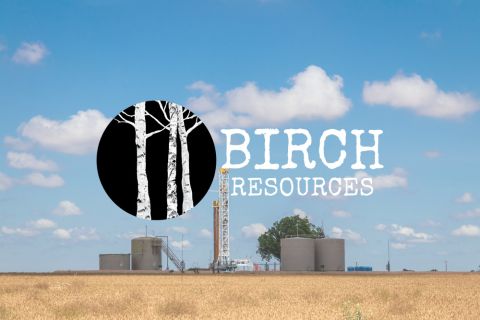The massive wildfire raging in Canada's oil sands region has forced some thermal projects to shut down steaming operations entirely, taking producers into uncharted territory, as delicate reservoirs that require continuous production could be at risk, analysts said.
Six companies have completely shuttered 115,000 barrels per day (Mbbl/d) of thermal operations as a precaution against a wildfire that forced nearly 90,000 residents to evacuate the oil sands hub of Fort McMurray, Alberta, last week. That represents only about 5% of overall production from Alberta's oil sands, but for the companies involved it is among the most expensive to restart.
At least one company is considering keeping a project shuttered indefinitely in the aftermath of the fire, reflecting how operators have had their hands forced by the blaze, as some were already considering curbing production because of low prices.
The technology needed to pump high-pressure steam to unlock bitumen deposits makes production costs expensive for thermal operators. But the costs of idling and then cranking production back up is also high, and the process involved in restarting production is delicate, especially for newer projects.
Producers that invested billions of dollars in oil sands reservoirs chose to operate at a loss rather than shut barrels in even at the peak of low oil prices in the first quarter of 2016.
Thermal production is expected to take longer to restart than the roughly 900 Mbbl/d of mining output halted, both because of the steaming and heating processes involved and because some thermal projects are still inaccessible due to the fire.
Some companies are unsure as to how they will proceed. Conoco Phillips Canada's President Ken Lueers said the company would face a big learning curve on its 30 Mbbl/d Surmont project, which was evacuated May 4.
"The asset is very new, the maximum time we have had steam under the ground is under a year and we don't know how developed those steam chambers are and how they may or may not have dissipated," he said, adding Conoco may have to redrill some wells if temperature differences cause steel liners to buckle.
The length of time operations are halted and the maturity of the reservoir are crucial for determining how difficult and how costly the restart process is.
"For a company that has just started up, the heat injected into the reservoir will be far less than those that have been operating for years. They [the reservoirs] might react differently when they start to go back [online]," said Bernard Leung, a consultant and former oil sands production engineer with Devon Energy Corp. (NYSE: DVN).
By contrast, Toshi Hirata, president of Japan Canada Oil Sands Ltd., which shut down its 5 Mbbl/d Hangingstone plant last week, said he was confident the reservoir would not be affected because the facility has been steaming for 15 years.
However, he suggested Hangingstone might do what was considered unlikely--keep the operation offline for some time because of low global oil prices.
Looking At The Unknown
Companies are unsure what the exact effect will be on carefully-engineered bitumen reservoirs, which are produced by injecting steam underground through wellbores to heat and pressurize tarry bitumen so it can flow through pipelines to the surface.
If facilities are offline for three to six months steam could condense into water in the reservoirs, which would have to be pumped out, treated and disposed of before new steaming can begin, industry players said.
Other risks include sand collapsing into the reservoir, or engineers struggling to find the right steam pressure needed to optimize bitumen production.
"A general number we work off is that there is a three- or four-week period where the reservoir can maintain pressure, but every reservoir is different," said Wood Mackenzie analyst Peter Argiris. "You increase the risk beyond that period."
Operators stop steaming through some wells for up to three weeks at a time during planned maintenance, and last year Cenovus Energy shut down its entire Christina Lake facility as a precaution against forest fires for 11 days.
During the last oil price crash in 2008-2009, Connacher Oil and Gas was the only company to reduce production, shutting in half its 10 Mbbl/dGreat Divide thermal output for two months. It struggled to hit output targets for years afterwards.
Athabasca's 12 Mbbl/d facility, also called Hangingstone, shut down on May 11 and is intact but still threatened by the fire, Alberta Premier Rachel Notley said on May 10. Nexen Energy's Long Lake facility, which produces 20 Mbbl/d, Husky Energy's 30 Mbbl/d Sunrise plant, and Statoil's 20 Mbbl/d Leismer project are also offline.
Recommended Reading
Brazil’s Mero-3 Offshore Development Reaches First Oil
2024-10-30 - With the start-up of Mero-3, the production capacity of the Mero field has reached 590,000 bbl/d.
TotalEnergies Awards SBM Offshore FPSO GranMorgu Development Contract
2024-11-15 - SBM will construct and install a floating production, storage and offloading vessel for TotalEnergies alongside its partner Technip Energies, the company said.
E&P Highlights: Oct. 21, 2024
2024-10-21 - Here’s a roundup of the latest E&P headlines, with a large contract announced offshore Gulf of Mexico and strategic partnerships aimed at optimizing oilfield production.
Hot Permian Pie: Birch’s Scorching New Dean Wells in Dawson County
2024-10-15 - Birch Resources is continuing its big-oil-well streak in the Dean formation in southern Dawson County with two new wells IP’ing up to 2,768 bbl/d.
Baker Hughes to Supply Petrobras' Presalt Fields with Flexible Pipe Systems
2024-10-28 - Baker Hughes said the systems will look to address the issue of corrosion cracking from CO2, which can arise as gas is reinjected into wells.





